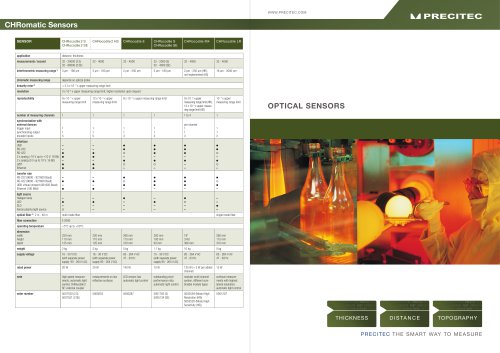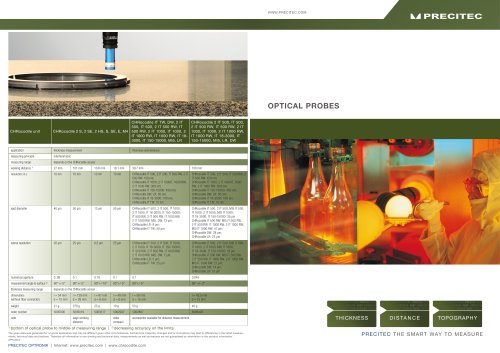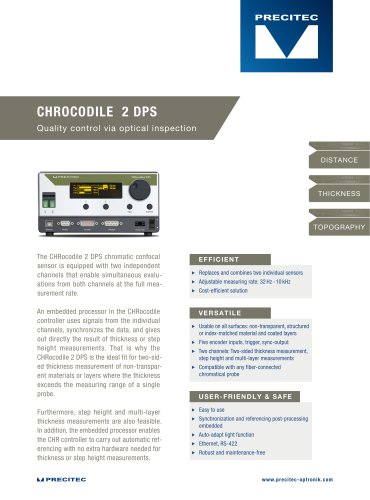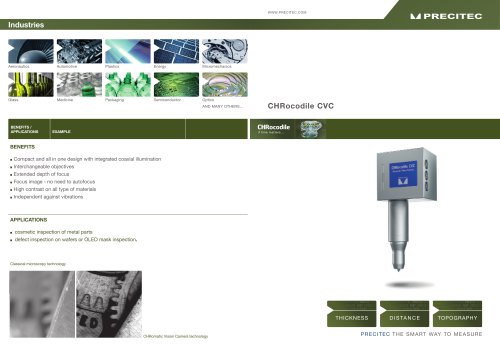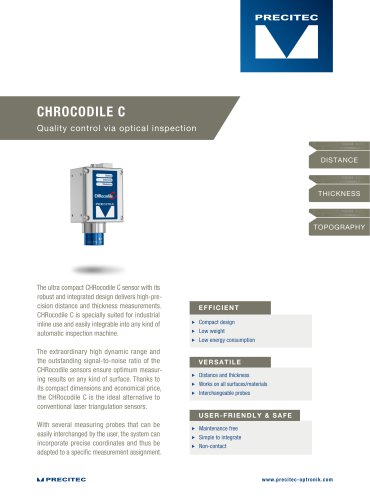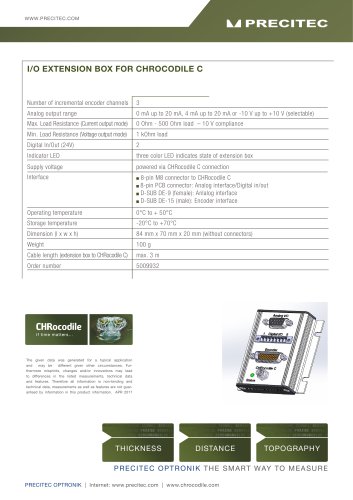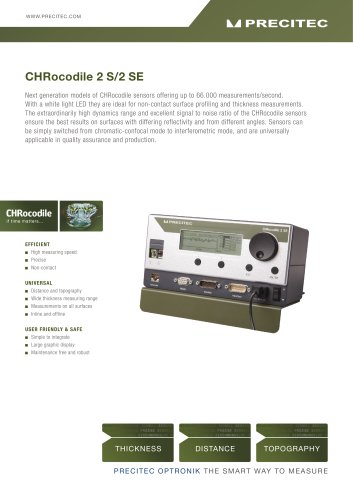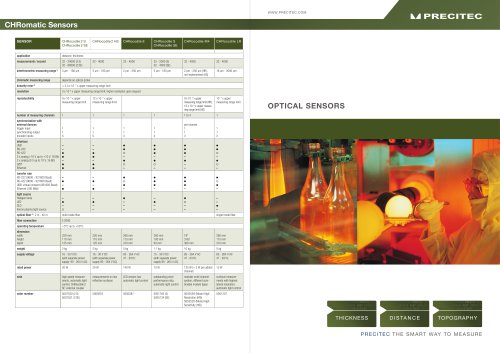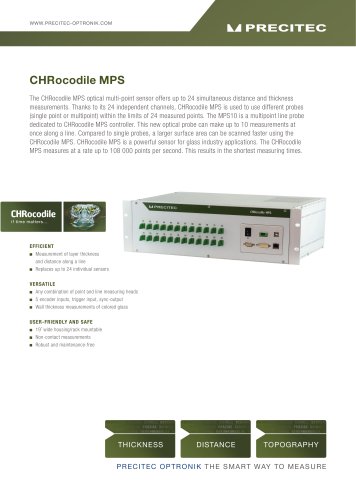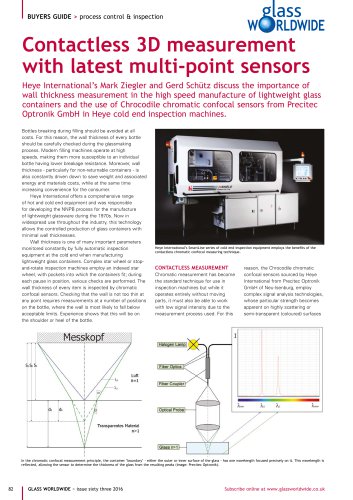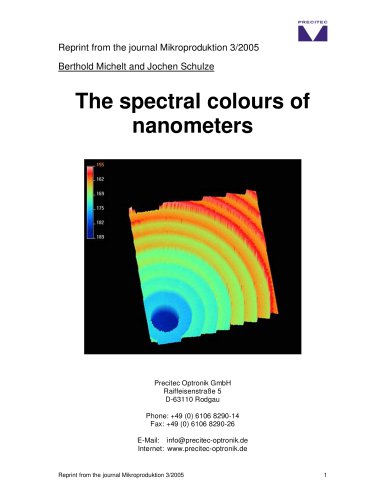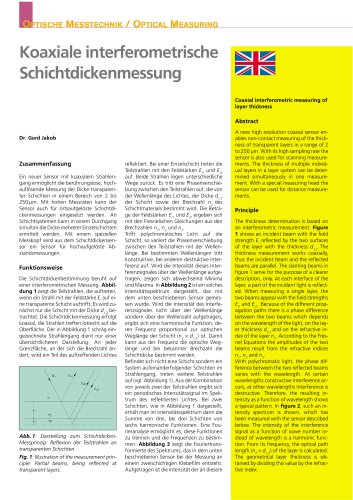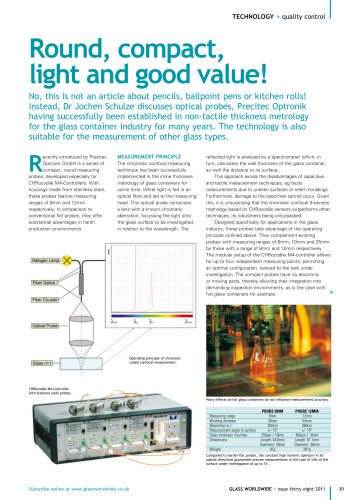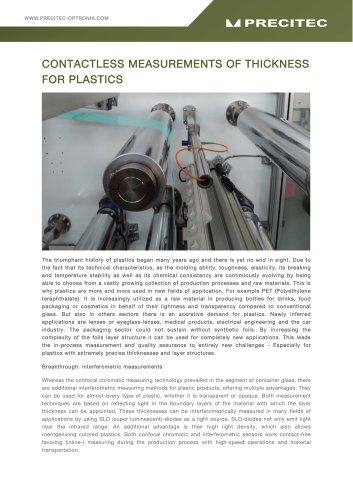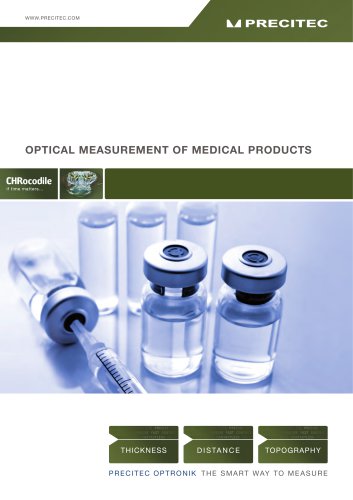 Website:
PRECITEC OPTRONIK
Website:
PRECITEC OPTRONIK
Group: PRECITEC
Catalog excerpts

Non-Contact Measurement of Central Lens Thickness Matthias Kunkel, Jochen Schulze Precitec Optronik GmbH, Rodgau, Germany
Open the catalog to page 1
Optical Metrology Non-Contact Measurement of Central Lens Thickness Matthias Kunkel, Jochen Schulze, Precitec Optronik GmbH, Rodgau, Germany The production of high-quality optical lenses from glass or polymer materials is subject to tight specification tolerances. Critical lens parameters such as central thickness have to be monitored frequently, during the production process. A non-contact, fast and precise optical measuring setup based upon a confocal chromatic probe can be used to measure central lens thickness ranging from 30 microns up to 25 mm. The only parameters that have to be...
Open the catalog to page 2
Optical Metrology Fig. 2: Ray path in a layer with flat parallel surfaces The geometrical light path is illustrated in Fig. 2 for the special - though recurrent - case of two parallel surfaces, showing two single rays coming from the optical probe. The incident ray 2 hits the upper surface at an angle α. Refraction neglected (n = 1), the ray would intersect with the optical axis in a distance s0 from the probe. However, due to refraction (n > 1), the ray travels on from the first surface at a smaller angle β and intersects with the optical axis at a bigger distance s2. This follows...
Open the catalog to page 3
Optical Metrology Fig. 5: Measurement setup for measuring the central thickness of lenses at a slope of up to 30° to the probe’s optical axis, yielding a high lateral resolution of 2 µm. Because of the high measurement repetition rate, this enables to build up scanning 3D systems for non-contact measurement of topographies, profiles and layer thickness. Typical applications are quality and production control within the glass, polymer, semiconductor and automotive industries, both in the lab and in industrial production. 6 light source, a fiber coupler, a spectrometer, control electronics...
Open the catalog to page 4All PRECITEC OPTRONIK catalogs and technical brochures
-
CHRocodile MPS 2 L
2 Pages
-
CHRomatic Sensors
2 Pages
-
Heads
2 Pages
-
CHRocodile 2 DPS
2 Pages
-
CHRomatic Vision Camera
2 Pages
-
CHRocodile C Extension Box
1 Pages
-
Flying Spot Scanner
2 Pages
-
Measuring Sensors
2 Pages
-
Optical Probes
2 Pages



